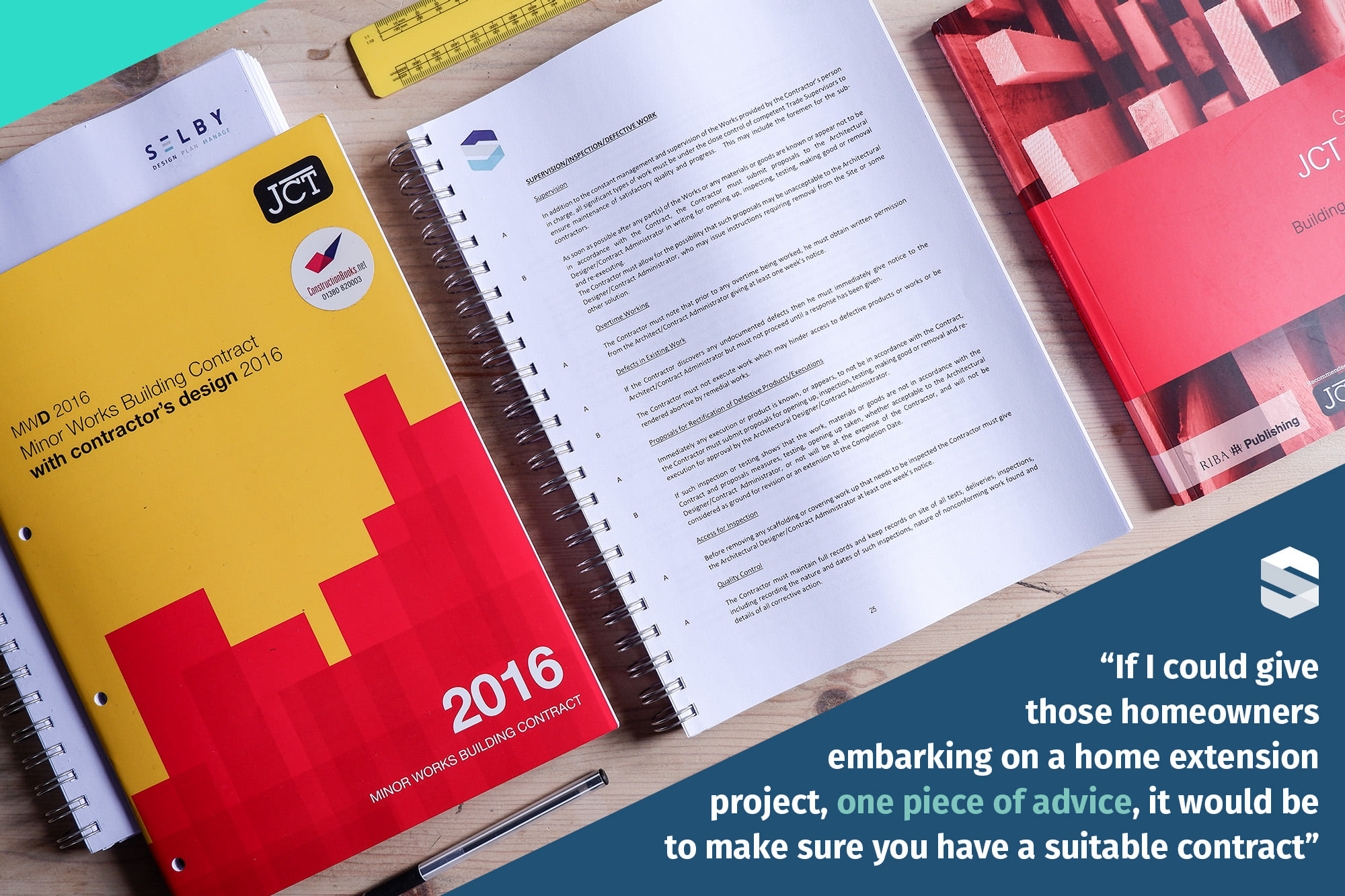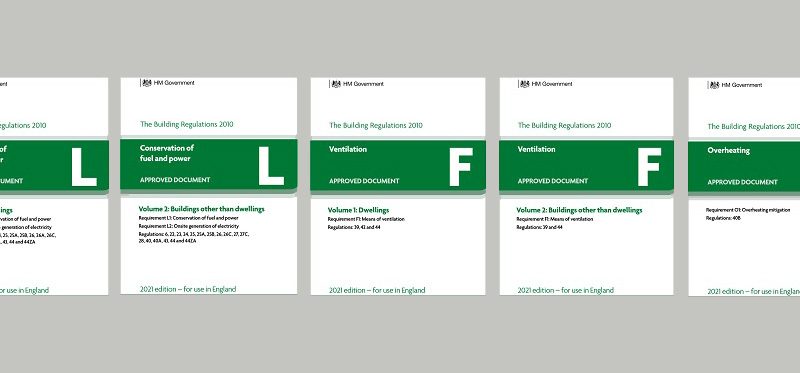
Builder Selection (Part 1) – When, What, Who, How?
For many, a home extension project may be the single largest expenditure that they ever make, with the exception of the property itself, so it is important to carry out appropriate due diligence when making builder selection.
We often hear horror stories of poor workmanship or homeowners being left with incomplete projects and builders who have disappeared without a trace, leaving customers out of pocket, so it is easy to understand why finding the right team can feel like a daunting prospect.
In this two part series we are going to cover some of the most frequently asked questions, around the process of seeking quotations for your building project, along with some top tips and advice which should help you to avoid the ‘cowboy builder’ (yeeha!).

When do we ask?
There is often some misconception around when you should approach contractors in request of quotations, some believing that they are the first port of call. In doing so, the majority will be met with a request for building regulation drawings at the very least. Whilst it may be possible to seek approximate cost advice, or itemised quotations from (or before) the production of building regulation drawings, as explained in our previous article ‘Understanding Costing Checkpoints’, ideally a request for a quotation should be made once a construction drawing and specification package has been produced.
Ask too soon, with too little information, and you might find that the quotation isn’t worth the paper it’s written on. This can often lead to false budgeting.

What do we need?
Providing contractors with detailed construction drawings and a full written specification, clearly identifies your requirements and expectations and goes a long way towards enabling control of your project cost. The thing to remember here is that whilst your building regulation drawings may show the size of your extension, structural design, drainage layout and some standard material specifications and notes, there are many things that will not have been included.
If you’re unclear on the difference between ‘Stage 5 – Building Regulation Drawings’ and ‘Stage 6 – Detailed Design & Specification’, then I recommend checking out the previous article.
In addition to the above, you should also provide existing building drawings, details of any underground services if known, a copy of your planning permission if applicable (which may contain conditions relating to the proposed works) and details of the appointed building inspectors (independent or local authority), along with your receipt of initial notice and plans approval. This documentation will also specify the stages of the project that will require inspection by building control (typically arranged by your contractor at the appropriate time) and any necessary certificates that will need to be provided by your contractor to achieve final sign off.

Who should we approach?
We’ll go into more detail on some of the vetting criteria in part 2 but will assume for the moment that the appropriate checks will be carried out in each case.
If you’ve seen building work going on nearby, a good starting point would be to take note of the builders carrying out those works. Granted, you can’t always ‘judge a book by its cover’, but you can usually get a good idea of how the builders operate on a day-to-day basis, if it is somewhere that you pass regularly. Is the site tidy and protected, or is it spilling into the street? Do they appear to be operating safely? Is there continuity of work from one day to the next, or are they there for a couple of days and then gone for a week or more? These, among other things, can begin to build a picture of whether they’re a professional team or not. Better still, if you can speak to the homeowner for some feedback, then you may be able to quickly remove some of the guesswork and decide whether they are worth considering.

If you’ve not seen any building work being carried out nearby, then asking friends, family and colleagues is also a good option. Have they, or anybody they know, had building work carried out recently which they have been happy with (or unhappy with and should be avoided)? A good recommendation is worth its weight in gold, because it’s as the saying goes; “the proof is in the pudding!’
Finally (and I say finally, because in my experience these three approaches tend to provide sufficient candidates), you can ask your Designer/Project Manager. They will have the most regular, first-hand experience of more than one building contractor and on a variety of sized projects. In addition, in most cases they will have had the opportunity to inspect construction work carried out by those contractors not only during the works, but also 6-12 months after project completion, in conjunction with the defects liability period.

During the early stages of your project, predominately the planning stage, you may find that builders approach you. This could be in the form of a letter introducing the company and requesting an opportunity to quote and is usually a result of them tracing your address to a planning application. Personally, I would tend to avoid these companies, or those who are cold calling and mass leaflet dropping. Quite frankly, there is usually a reason they have found themselves searching for work. You should also be prepared to wait for a good builder.
How do we select & appoint?
A formal and managed tender process is by far the best way of obtaining competitive quotations for your building project, and the detail contained within your tender package will also later form part of your contract.
Once you have decided which builders you would like to approach, this can be done initially via email or telephone call to establish those who are interested. This may also be accompanied by a pre-qualification questionnaire (PQQ) to help produce a shortlist of the most appropriate builders for the project and whom you will later invite to tender. We usually recommend contacting 5-6 builders and of those, inviting up to 4 to tender. This makes some allowance for the possibility of one pulling out. Ideally you should hope to receive a minimum of 3 tender return quotes, to enable sufficient cost comparisons.
In addition to the documentation mentioned earlier in the article, your tender package should include an invitation letter, a form of tender, preliminaries and general conditions and a cost summary. With the assistance of your Designer/Project Manager, the package is issued to contractors and a tender return date agreed (typically 30 days).
During the tender process, contractors will be expected to visit site. This will help them assess the existing site conditions and constraints, as well as giving you the opportunity to meet, discuss the project and ask any questions you may have.

Upon receipt of the tender return quotes, a side-by-side cost comparison spreadsheet will be prepared for ease of reference when reviewing section costs. Your Designer/Project Manager will also be able to assist you with your negotiations prior to selection of contractor. During this process it is also advisable to try and remove/finalise any items which have been given provisional sums.
When you are ready to appoint your chosen contractor, any necessary amendments are made to the specifications and quotation and the contract sum is agreed.
Alongside the detailed quotation and project package, we recommend using an industry recognised contract, for example a JCT Minor Works contract. The contract sets out the agreed contract sum, the start and end date, the obligations and responsibilities of each party and the procedures for handling any disputes, including details of the necessary insurance measures during the construction phase.
Contracts are typically prepared by the contract administrator, issued to each party for signing and the start date is agreed. There is also now a JCT Homeowner contract which can be used when the property owner has not appointed a consultant to administer the contract.

There are of course some further complexities to consider, in relation to many of the above points, particularly the contract element (which perhaps we will cover in more detail, in a future article), but hopefully this has provided a broad overview of the ‘When, What, Who, How?’ when it comes to selecting your builder.
In part two we’ll give you some top tips for navigating your way through the Wild West and some of the ‘red flags’ you can look out for when considering and vetting contractors.




